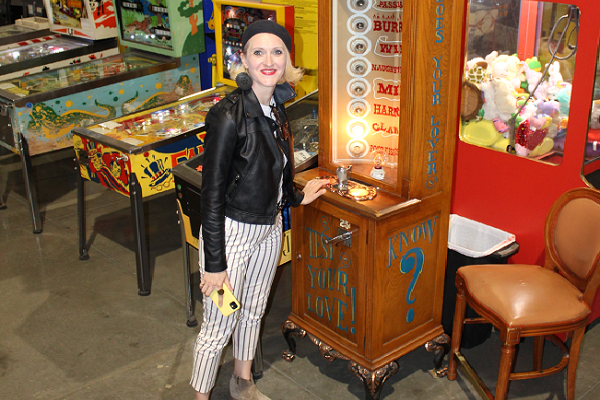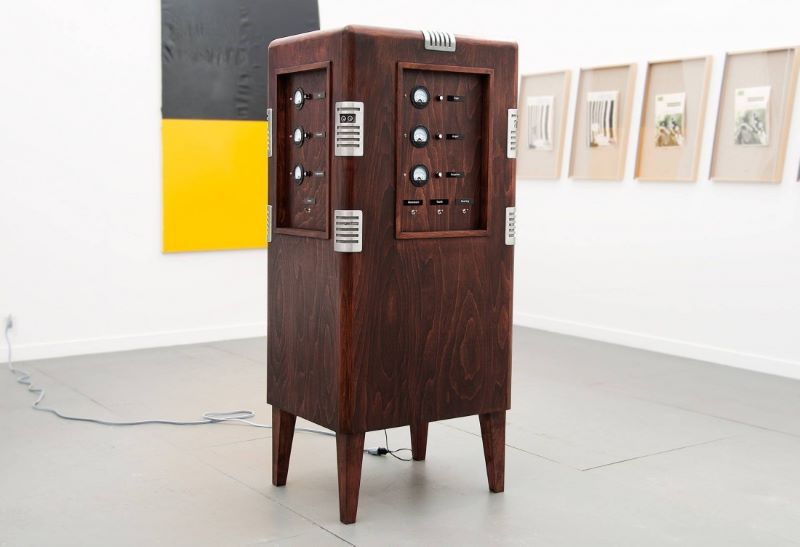W każdym z 50 Tygodni w Mieście Nauki publikujemy tekst o wybranych badaniach prowadzonych w danej tematyce przez naukowców z uczelni wchodzących w skład Konsorcjum Akademickiego – Katowice Miasto Nauki. Teksty dają wgląd w różnorodność zagadnień poruszanych przez naukowców oraz pokazują, jaki potencjał badawczy drzemie w uczelniach tworzących konsorcjum.
| Agnieszka Kliks-Pudlik |
W tygodniu, w którym wypadają Walentynki, w Europejskim Mieście Nauki Katowice 2024 trwa Tydzień Miłości. Temat ten nie jest obcy naukowcom z uczelni tworzących Konsorcjum Akademickie – Katowice Miasto Nauki, którzy zajmują się m.in. historią automatów do szacowania romantycznej zgodności par i chorobą złamanego serca.
Kuratorką Tygodnia Miłości jest dr hab. Anna Malinowska, prof. UŚ z Wydziału Humanistycznego Uniwersytetu Śląskiego w Katowicach. Badaczka nurtu love studies przekonuje, że w sprawach miłości zależność człowieka od maszyn jest dużo starsza niż się wydaje.
Dr hab. Ania Malinowska, prof. UŚ przy testerze miłości | archiwum prywatne
– Związki pomiędzy technologią a miłością kojarzymy zwykle z wyłonieniem się środowisk sieciowych oraz kultury cyfrowej, myśląc np. o aplikacjach randkowych. Jednak ich początki sięgają progu XX wieku, gdy pojawiły się pierwsze automaty mające określić podobieństwo pary na podstawie wspólnych cech osobowościowych – opowiada naukowczyni, która specjalizuje się w badaniach nad semiotyką miłości w kontekście kohabitacji ludzi i inteligentnych maszyn.
Mowa o „testerach miłości” (ang. love tester machines), czyli urządzeniach do szacowania romantycznej kompatybilności par, które powstały na fali rozwoju technologii dla przemysłu rozrywkowego oraz fascynacji psychologicznymi teoriami osobowości. Szczególnie popularne były w Anglii, Francji, Japonii i USA. Były to pierwsze testy osobowości dla związków romantycznych.
Te maszyny (wyglądem przypominające szafy) były wyposażone w prosty mechanizm rotacyjny (a później w mechanizm cyfrowy) i działały na technice loteryjnej, czyli losowym wyborze spośród określonych opcji, które ujawniały się po uruchomieniu mechanizmu (przycisku, wajchy lub dźwigni na monetę). – Taka forma technologicznego wróżenia w oparciu o kulturowe i psychologiczne parametry przeniknęła do środowisk platformowych (jak portale randkowe) i jest kontynuacją algorytmicznego podejścia do relacyjności – wskazuje prof. Anna Malinowska.
W ocenie naukowczyni, testery miłości to znaczące, ale dotąd niezbadane obiekty technologiczne i media leżące u podstaw współczesnej algorytmizacji relacji miłosnych. Postanowiła więc zgłębić to zagadnienie w realizowanym właśnie projekcie pt. „Testery miłości: Technologiczne prototypy profilowania uczuć, osobowości i relacji (studium kulturowe)”, finansowanym ze środków Narodowego Centrum Nauki w ramach konkursu OPUS.
Projekt wpisuje się w tradycję archeologii mediów: dziedziny studiów kulturowych zajmującej się badaniem zapomnianych technologii i ich wpływu na współczesne kultury społeczne. Badania są nowatorskie. Dotąd nikt bowiem nie dokonał systematyzacji tych urządzeń ani nie opisał jej kulturowych wpływów.
– Moje badania pokazują dotąd nieznane związki między dawnymi urządzeniami do testowania kompatybilności par a współczesnymi algorytmami testów osobowych dla relacji romantycznych. Pokazuję, że wykorzystanie technologii w miłości dzieje się od dawna i w mojej ocenie będzie się nadal pogłębiać – podsumowuje prof. Anna Malinowska.
Zestaw do kontroli emocji Przemysława Jasielskiego, który prezentowany jest podczas Tygodnia Miłości na wystawie „Emotion Control Unit” | https://jasielski.com/
Złamane serce
Symbolem miłości jest serce – domena kardiologii. Okazuje się, że stres towarzyszący rozstaniu z bliską osobą bądź jej utracie przekłada się na chorobę złamanego serca.
Chodzi o zespół takotsubo, czyli patologię serca, która objawia się ostrym stanem przypominającym do złudzenia zawał, o charakterystycznym obrazowaniu elektrokardiograficznym. W czasie ostrej fazy choroby komora serca przybiera wygląd naczynia o wąskiej szyjce i spłaszczonym dnie – stąd też nazwa syndromu, który po japońsku znaczy „naczynie do połowu ośmiornic” – o takim właśnie kształcie.
Badaniem tego syndromu zajmują się m.in. kardiolodzy ze Śląskiego Uniwersytetu Medycznego w Katowicach. W ramach grantu przyznanego przez Polskie Towarzystwo Kardiologiczne, kardiolog inwazyjny dr hab. n. med. Maciej Wybraniec prowadził badania na temat znaczenia klinicznego różnych rzadkich typów zawałów serca występujących u młodych ludzi. – Okazuje się, że duży odsetek „młodych zawałowców” to w istocie pacjenci, u których nie występuje miażdżyca, a część z tych przypadków to właśnie wspomniana kardiomiopatia związana ze stresem, tj. takotsubo – podkreśla badacz.
W oparciu o jego autorską pracę zespół takotsubo wpisuje się w szerszy kontekst uszkodzenia neurokardiogennego, czyli sytuacji, w której patologia mózgu lub umysłu wywiera szkodliwy wpływ na mięsień sercowy. – Uczucie przyspieszonego bicia serca i lęku, które często występują u osób z zaburzeniami lękowymi stanowią przykład oddziaływania ośrodkowego układu nerwowego na serce poprzez stymulację układu współczulnego – tłumaczy dr hab. n. med. Maciej Wybraniec.
Pełny program Tygodnia Miłości znajduje się na stronie wydarzenia.







